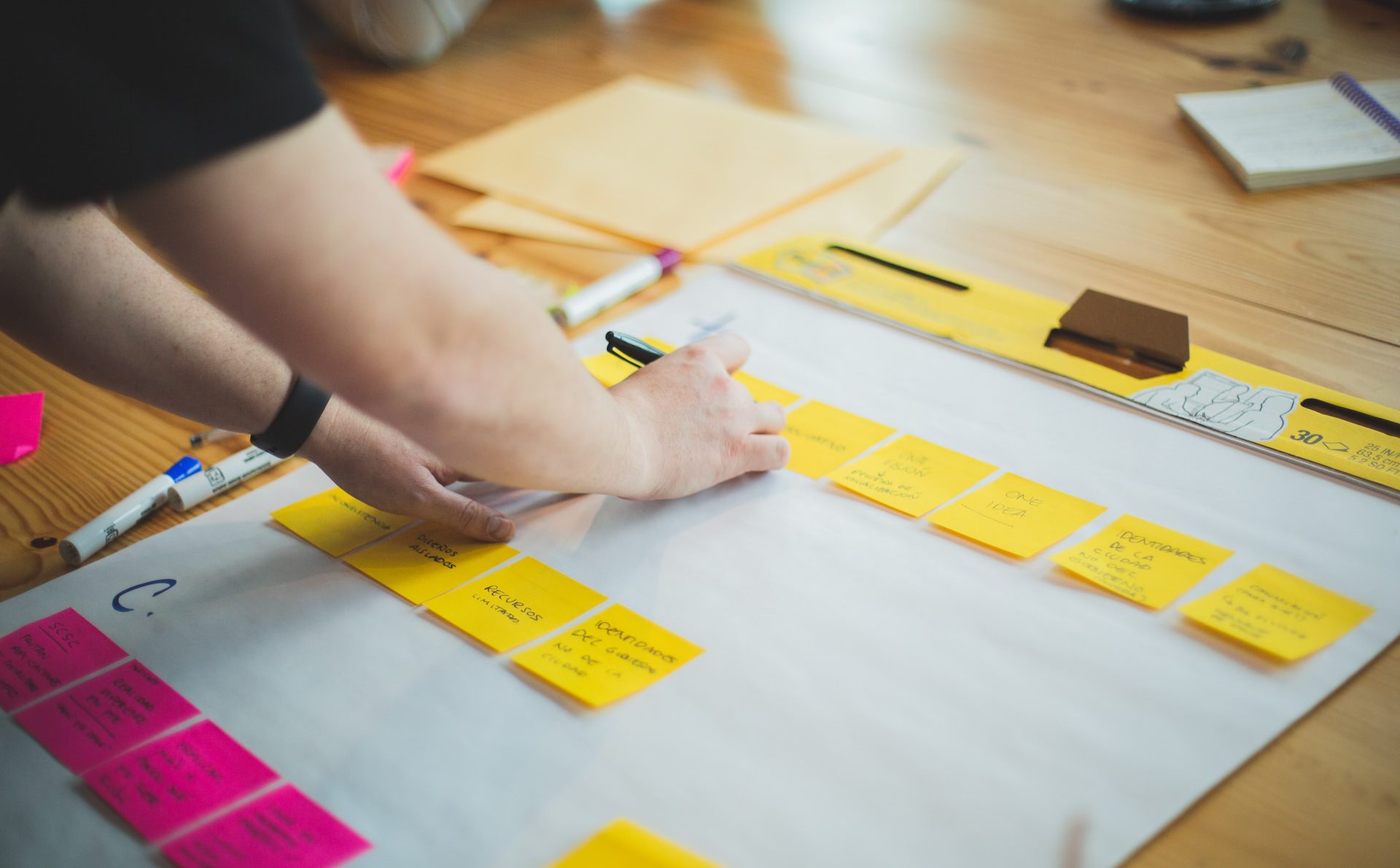This time round, as part of this series of articles discussing the eight wastes of Lean, I have thought of sharing with you some views about a type of waste that should be familiar for most of us to identify with, and relate to.
This is especially true as you work your way around the islands, trying to make it to that meeting in time. And, as you make your way through the journey, possibly lost in thought as you wait (another type of waste!) for the lights to turn green again, you think to yourself: ‘but couldn’t we have this meeting on Zoom instead?’
The non-value adding activity in this article is nothing more than what we call transportation waste. In other words, the effort spent on moving ‘things’ from one place to another, when – in all probability – we can do without.
Definition time
Let us first define the word ‘things’, within the context of this discussion. By this, we shall refer to anything that can be transferred: from physical goods such as raw material, sub-assemblies and components, or parts needed for a production assembly line, a civil engineering job, or a construction project.
The word ‘things’ in this context could also refer to, say, physical paper files and folder-full documents within a busy legal firm – and just about any other tangible article we can think of… including people.
However, our use of the word ‘things’ might also refer to less tangible matter, such as data and information.
Just spare a thought about how many emails fly about through our offices during every minute of the day. Similarly, just try figuring out the volumes of terabytes of data being uploaded and downloaded across a multitude of servers dotted around the globe.
Transporting such ‘things’ across places (be they within our brick-and-mortar offices, across the Islands and beyond, or electronically through a myriad of telecommunications networks) necessitates the expenditure of effort, energy, coordination and so many other elements, not to mention the consumption of precious time, to process such transference.
On many an occasion (many times, more than we might imagine!), the transportation of such ‘things’ may not be absolutely necessary, possibly not contributing much value to the final outcome. This is when transportation is regarded as non-value adding and therefore contributing to wasteful tasks within the entire context of the process being executed.
This not to mention the numerous other knock-on effects that such transportation causes, for example: undesirable environmental impact, inconvenience to those involved, impacted or in some way affected by it, unnecessary delays, excessive noise, inventory management, additional costs, additional risk, etc.
We spoke in a previous article about inventory waste . A direct consequence of inventory waste is very likely to be transportation waste. Too much inventory will, in all probability, necessitate the additional transportation of such inventory (for example the need to move stuff across warehouses, across jobsites, etc).
A point (or two) in case
We can currently identify a number of construction sites spread around us. A lot of productivity is generally taking place at most such sites. With contractors generally working to tight deadlines in order to get their part of the project done in time, as per some complex project plan.
The slightest slip, or lack of coordination (a basic communication breakdown, perhaps?), may result in one of the mechanical engineering contractors dropping off, on site, all the steel beams and fittings that are required for the entire project, all at the same time! As the project progresses onwards, these (excessive inventory) steel beams and fittings will no doubt have to be moved around, and out of the way, to enable other works to be executed by other contractors engaged on other aspects of the project.
Clearly, the excessive inventory brought on site a little bit too early has resulted in the generation of undesirable transportation waste as a consequence.
Similarly, badly planned logistics of materials to the construction site may result in multiple (additional) trips needed to be made to the site. Again, another cause for transportation waste.
As you would appreciate, all such unnecessary handling, transporting of material, and additional trips cost time, money and effort, to say the least – without adding any value to the overall project.
On another note, I have recently experienced the consequence of transportation waste on a personal level. Just the other week I was attending to a relative of mine for some medical treatment.
Bless them, the people working in the healthcare sector are a Godsend – such passionate professionals! We definitely cannot afford to not maximise value out of their dedicated efforts. Any form of waste of such resources in this segment is sacrilegious!
Transportation is sometimes unavoidable due to physical constraints which necessitate patients to be taken to specific locations within the building to receive the desired testing, diagnosis and/or treatment. This transportation is not wasteful, but part of the value-adding tasks in getting the right treatment delivered to the patient.
What is not value-adding is any consequence resulting from the lack in clear communication. For example, the lack in clear coordination meant that a nurse (important resource in the chain) was deployed to wheel my relative to the specialist’s treatment area at a wrong time, thus having to return the patient back to the ward, awaiting yet another trip to the specialist at some later time of the day.
If we had to lightly analyse the process undertaken from a lean perspective, the net outcome can be broken down into a few non-lean observations:
- handling of patient off the bed (inconvenience, expended effort, movement, etc), onto the wheel chair, to be taken to the treatment room;
- deployment of specialised resource to transport patient to treatment room (misuse of available resources, energy use in elevators, imposed delays to other would-be elevator users, etc);
- unnecessary interruption of specialist from ongoing task, to clarify the proper appointment time (disruption);
- re- deployment of specialised resource to transport patient back to ward (repeat potential observations from above!);
- handling of patient back to bed (and again: inconvenience, expended effort, plus: possibly a demoralising outcome for patient, build-up of anxiety, etc);
- repeat of the above steps at (hopefully) the rightly coordinated time!
As one can possibly identify, when you look through the process from a Lean perspective, the invasive elements of non-value adding tasks involved from a simple lack of mis-coordinated/communicated task, can create an avalanche of other non-value adding and undesirable effects on the entire process elements.
With our limitations in available critical resources, can we afford to misuse any? What could possibly have been a rather simple communication error/omission, in this case, contributed to the absorption of multiple valuable resources.
Strive in eliminating transportation waste
In my course of duties, when working with clients to find better ways of doing things (in business we call it by some fancy name like ‘Operational Excellence’), when we are analysing the process dynamics and we are investigating the need to say, move ‘something’ (a box, a document, electronic data or whatever) from point A to point B, before we can proceed on to the next value adding activity, a first natural question would be: “can I execute activity B near activity A, thereby completely eliminating the need to transport the item from A to B?”
If this is absolutely not possible, a next question would be: “what is the most efficient and effective way of executing this transportation task?”
We tend to then look for possible solutions like the use of a trolley, design a mechanical conveyor system, resort to efficient data compression and/or information network types, etc.
In designing the future state process, keeping the various types of Lean wastes in mind helps in challenging the current state. Transportation waste, in particular. Try eliminating or reducing any unnecessary transportation to the barest minimum possible. Once this is established, the next attempt would be to find the easiest way of handling any remnant transportation of ‘things’. Seek options available, be it technical equipment (if physical transference) or technological/digital systems (data processing, network types, etc if intangible transfer).
A holistic approach to minimising transportation waste needs to fit within the complex equation for developing the Lean Digital Future State for the business process being analysed.
Spaghetti and transportation waste
Try mapping out on a ‘spaghetti diagram’ the paths traversed by your staff as they go around your office floor in getting their daily duties executed. Or, try doing the same with your email correspondence that goes around within a specific task you are trying to achieve.
You might ask about the relationship between spaghetti and transportation waste. Well, this is nothing more than a simplistic technique of tracing out on a piece of paper depicting the office layout (for example), the paths travelled by your people, or your email, as these criss-cross in between offices.
You will soon notice the routes undertaken by the email, through your network, before real value adding activity becomes evident. You might also notice specific spots within the office layout where the carpeting will probably need to be replaced more regularly as a result of too much people traffic!
In order to reduce this kind of transportation waste, managers might need to look at improving on various factors such as:
- Factory, plant or office layouts (relocate the accounts department and procurement offices, and make them right next to each other – and not on different floors in the building if you still operate a somewhat paper-based purchasing system).
- Fine-tune the process flows and systems (do you really need so many steps, and people involved in the process? Can this be better streamlined and thus necessitating less routing of process steps when getting the job done?)
- Clearly define information requirements to prevent unnecessary conveyance of material and/or information. Eliminate or reduce the constant, and possibly useless, back and forth transference.
Spaghetti diagrams are one basic tool that is effectively used in visualising transportation of people, material and data or information through a process. This simple, hardly-scientific tactic can be adopted and used to identify and visualise the unnecessary, non-value adding, transportation components within your process activities.
Transferring ‘things’ around costs time, energy and money. Therefore, through Lean thinking, transportation can be classified as a wasteful activity. By now, you might have realised that whenever there is one type of waste (we have already so far discussed a number of the Lean Wastes… and more is yet to come) there is often at least another type of waste that is generated as a consequence.
Learning about, and being able to identify, transportation waste on your jobsite, within the office dynamics, or your other work environment is important when undertaking your Lean journey. In order to be in position to reduce this type of waste, you must first be aware of it, and recognise it! Once you pinpoint it, then you can start working to reduce it to the barest minimum possible.
Ing. Joseph Micallef is a freelance Consulting Advisor, bringing with him over 30 years’ worth of experience across various sectors. Working in areas related with quality, lean, business process transformation and project execution and programme management he can be contacted directly on m +356 9982 2244 or e: joseph.micallef@icloud.com
5 key self-development tips every business leader needs to take note of
Self-development can come in the form of better leadership skills, growing a wider network of contacts, and also an improved ...
Give new life to your plans: 5 tips for business leaders to turn strategy into execution
Business leaders have to strike a balance between the resources they have available and the urgency of a particular task.
6 tips on how to conquer your to-do list
Here’s how to make the most out of your workdays.
6 ways business leaders can instil a culture of creativity within their teams
At the heart of it, business leaders need to focus on fostering their team’s creativity, rather than simply relying on ...









